What is Retinitis Pigmentosa (RP)?
 |
| Support Retinitis Pigmentosa Awareness Purple Ribbon Angel |
The first sign of retinitis pigmentosa is usually a loss of
night vision, which becomes apparent in childhood. Problems with night vision
can make it difficult to navigate in low light. Later, the disease causes blind
spots to develop in the side (peripheral) vision. Over time, these blind spots
merge to produce tunnel vision. The disease progresses over years or decades to
affect central vision, which is needed for detailed tasks such as reading,
driving, and recognizing faces. In adulthood, many people with retinitis
pigmentosa become legally blind.
The signs and symptoms of retinitis pigmentosa are most
often limited to vision loss. When the disorder occurs by itself, it is
described as nonsyndromic. Researchers have identified several major types of
nonsyndromic retinitis pigmentosa, which are usually distinguished by their
pattern of inheritance: autosomal dominant, autosomal recessive, or X-linked.
 |
| Retinitis Pigmentosa Awareness Angel Ribbon Art Pin |
Read more about Usher
syndrome; Refsum
disease; neuropathy, ataxia, and retinitis pigmentosa;
andBardet-Biedl syndrome.
Retinitis pigmentosa is one of the most common inherited
diseases of the retina (retinopathies). It is estimated to affect 1 in 3,500 to
1 in 4,000 people in the United States and Europe.
 |
| Retinitis Pigmentosa Awareness Ribbon Purple Angel Custom Art Shirts |
The genes associated with retinitis pigmentosa play
essential roles in the structure and function of specialized light receptor
cells (photoreceptors) in the retina. These cells transmit visual signals from
the eye to the brain. The retina contains two types of photoreceptors, rods and
cones. Rods are responsible for vision in low light, while cones provide vision
in bright light, including color vision.
Mutations in any of the genes responsible for retinitis
pigmentosa lead to a gradual loss of rods and cones in the retina. The
progressive degeneration of these cells causes the characteristic pattern of
vision loss that occurs in people with retinitis pigmentosa. Rods typically
break down before cones, which is why night vision impairment is usually the
first sign of the disorder. Daytime vision is disrupted later, as both rods and
cones are lost.
See a list of genes associated with retinitis
pigmentosa.
Retinitis pigmentosa often has an autosomal dominant
inheritance pattern, which means one copy of an altered gene in each cell is
sufficient to cause the disorder. Most people with autosomal dominant retinitis
pigmentosa have an affected parent and other family members with the disorder.
 |
This condition can also be inherited in an X-linked pattern.
The genes associated with X-linked retinitis pigmentosa are located on the X
chromosome, which is one of the two sex chromosomes. In males (who have only
one X chromosome), one altered copy of the gene in each cell is sufficient to
cause the condition. In females, (who have two X chromosomes), mutations
usually have to occur in both copes of the gene to cause the disorder. However,
at least 20 percent of females who carry only one mutated copy of the gene
develop retinal degeneration and associated vision loss. In most cases, males
experience more severe symptoms of the disorder than females. A characteristic
of X-linked inheritance is that fathers cannot pass X-linked traits to their
sons.
In 10 to 40 percent of all cases of retinitis pigmentosa,
only one person in a family is affected. In these families, the disorder is
described as simplex. It can be difficult to determine the inheritance pattern
of simplex cases because affected individuals may have no affected relatives or
may be unaware of other family members with the disease. Simplex cases can also
result from a new gene mutation that is not present in other family members.
These resources address the diagnosis or management of
retinitis pigmentosa and may include treatment providers.
 |
| Retinitis Pigmentosa Purple Awareness Ribbon Angel Gift Custom Coffee Mugs |
General information about the diagnosis and management of genetic conditions is
available in the Handbook. Read more about genetic
testing, particularly the difference between clinical tests and research tests.
To locate a healthcare provider, see How can I find a genetics professional in my area? in
the Handbook.
You may find the following resources about retinitis
pigmentosa helpful. These materials are written for the general public.
·
MedlinePlus - Health information (2
links)
·
Genetic and Rare Diseases Information Center -
Information about genetic conditions and rare diseases (2 links)
·
Additional NIH Resources - National
Institutes of Health (2 links)
·
Educational resources - Information
pages (7 links)
·
Patient support - For patients and
families (7 links)
You may also be interested in these resources, which are
designed for healthcare professionals and researchers.
·
Gene Reviews -
Clinical summary
-
Clinical summary
·
Genetic Testing Registry - Repository
of genetic test information (1 link)
·
ClinicalTrials.gov -
Linking patients to medical research
-
Linking patients to medical research
·
PubMed -
Recent literature
-
Recent literature
·
OMIM -
Genetic disorder catalog
-
Genetic disorder catalog
- cone-rod retinal dystrophy
- pigmentary retinopathy
- rod-cone dystrophy
- RP
- tapetoretinal degeneration
For more information about naming genetic conditions, see
the Genetics Home Reference Condition Naming Guidelines and How are genetic conditions and genes named? in
the Handbook.
Where can I find general information about genetic
conditions?
The Handbook provides basic information about genetics in
clear language.
These links provide additional genetics resources that may
be useful.
ataxia ; autosomal ; autosomal dominant ; autosomal recessive ; cell ; chromosome ; cones ; gene ;inheritance ; inheritance pattern ; inherited ; mutation ; neuropathy ; new gene mutation ;pattern of inheritance ; peripheral ; receptor ; recessive ; retina ; rods ; sex chromosomes ; sign ;syndrome ; tissue
You may find definitions for these and many other terms in
the Genetics Home Reference Glossary.
See also Understanding Medical Terminology.
The above information is from the National Institutes for Health. Learn more on their website at http://ghr.nlm.nih.gov/condition/retinitis-pigmentosa.
Visit Us & See More Art at AwarenessGallery.com!
Retinitis Pigmentosa uses a purple ribbon for its cause awareness. Buy Retinitis Pigmentosa Awareness Ribbon Gifts online. There are also options of the purple awareness ribbon art on Zazzle or CafePress. Learn more about Awareness Gallery Ribbon Art.
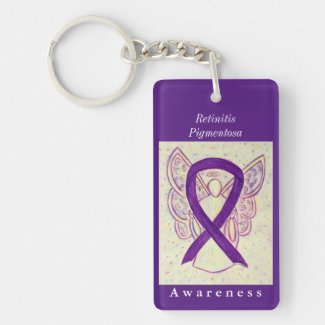
Retinitis Pigmentosa Awareness Ribbon Keychain





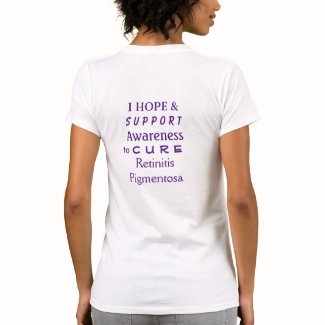



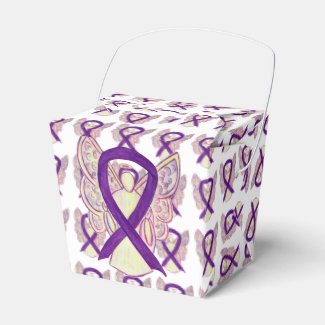
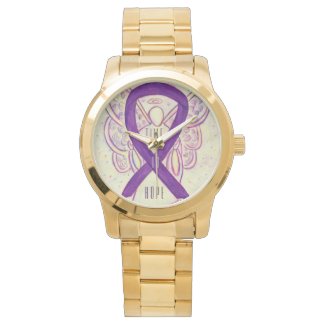

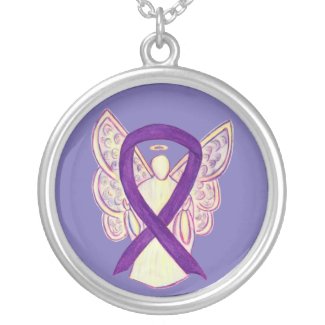
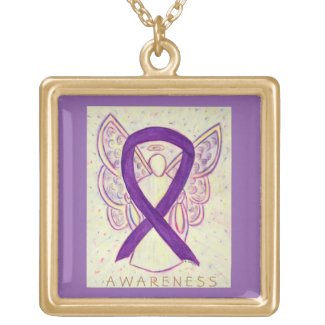




This comment has been removed by the author.
ReplyDeleteThis comment has been removed by the author.
ReplyDeleteThis is very interesting and an informative article. I did not know about this facts on test & retinitis pigmentosa treatment.My brother is a patient of this disease and we were looking for some effective treatment within a reasonable cost.
ReplyDeletei read a lot of stuff and i found that the way of writing to clearifing that exactly want to say was very good so i am impressed and ilike to come again in future.. Retinitis Pigmentosa
ReplyDeleteDid you know? Retinitis Pigmentosa is a genetic and rare eye condition, affecting approximately 1 in 4000 people in the United States and 1 in 3500 people in Canada. It results in progressive damage to the retina. Schedule regular full optometric eye exam to monitor your vision and manage symptoms.
ReplyDelete